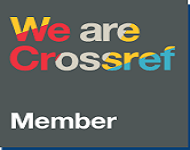Pelatihan Produk Olahan Jamur Pasca Panen untuk Penguatan Produktivitas Ekonomi SMA Islam Al-Azhar NW Kayangan
DOI:
https://doi.org/10.33394/jpu.v1i2.2876Keywords:
Training, Processed Products, Mushrooms, Economic Productivity.Abstract
References
Cooke, M., C. (2009). Fungi : Their Nature and Uses. New York: D. Appleton and Company, 549 and 551 Broadway.
Efendi, I., Dewi, I., Utami, S., Harisanti, B., & Primawati, S. (2020). Pembinaan Santri Pondok Pesantren NW Kayangan Lombok Barat dalam Pembuatan Produk Olahan Jamur Tiram Berbasis Entrepreneurship. Jurnal Pengabdian UNDIKMA, 1(1). doi:https://doi.org/10.33394/jpu.v1i1.2593
Ellis, D. (2015). Mycology. Retrieved June 20, 2015, from http://www.mycology.adelaide.edu.au.
Hageskal, G., Lima, N., & Skaar, I. (2009). The Study of Fungi in Drinking Water. Mycological Research, 113, 165-172.
Johan, M. (2014). Kandungan Nutrisi Baglog Jamur Tiram Putih (Pleurotus ostreatus) sebagai Bahan Pakan Ternak pada Masa Inkubasi yang Berbeda. Makassar: Universitas Hasanuddin.
Maulana, E. (2012). Panen Jamur Tiap Musim. Yogyakarta: Andi Offset.
Nugraheni, M., Hera, T. W. H., & Utama, A. (2014). Teknologi Pengolahan Produk Berbasis Jamur di Kawasan Rawan Bencana Erupsi Merapi. Inotek, 18(2), 177-192.
Purwantisari, S., & Rini, B., H. (2009). Isolasi dan Identifikasi Jamur Indigenous Rhizosfer Tanaman Kentang dari Lahan Pertanian Kentang Organik di Desa Pakis, Magelang. BIOMA, 11, 2.
Purwoko & Arkeman, Y. (2004). Kelayakan Industri Kerupuk Jamur Tiram di Kabupaten Bogor. Jurnal Teknik Industri, 13(3), 83-91.
Retnaningsih, N. (2009). Kelayakan Finansial Budidaya Jamur Tiram di Kabupaten Semarang. Jawa Tengah: Universitas Veteran Bangun Nusantara Sukoharjo.
Syaifudin, A. (2013). Proses Produksi pada Budidaya Jamur Tiram. Retrieved March 5, 2020, from http://www.jamurpedia.com/blog/.
Waluyo, L. (2004). Mikrobiologi Umum. Malang: UMM Press.
Downloads
Published
How to Cite
Issue
Section
Citation Check
License
Authors who publish with this journal agree to the following terms:
- Authors retain copyright and grant the journal right of first publication with the work simultaneously licensed under a Creative Commons Attribution License (CC BY-SA 4.0) that allows others to share the work with an acknowledgment of the work's authorship and initial publication in this journal.
- Authors are able to enter into separate, additional contractual arrangements for the non-exclusive distribution of the journal's published version of the work (e.g., post it to an institutional repository or publish it in a book), with an acknowledgment of its initial publication in this journal.
- Authors are permitted and encouraged to post their work online (e.g., in institutional repositories or on their website) prior to and during the submission process, as it can lead to productive exchanges, as well as earlier and greater citation of published work (See The Effect of Open Access).





